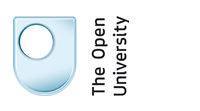

| ::: | Simon Holland |
| :: | Research Students |
| : | PhD Topics |
Research Themes
Projects
Harmony Space
Research Grants
Awards
Publications
Non-Print
Research Students
Visitors/ Interns
PhD Topics
Teaching
Resources
Contact
Site Map
The Music Computing Lab
Music Computing as a PhD topic
Music Computing
Music Computing is a broad term covering the use of computers in music. Research in Music Computing can be used in diverse ways: to empower expert or novice musicians, to illuminate musical activities, or to model music perception and cognition.Many kinds of research are possible, including:
• Finding principled ways to exploit theories of timbre, pitch, rhythm, melody, harmony, creativity, embodiment, or related areas in order to devise, create and test innovative musical tools.
• Exploiting new technologies such as ipads, touchtables, smart phones, body trackers, haptic devices, novel effectors and sensors in principled ways to devise, build and test novel tools for music.
• Designing, building, and evaluating tools to address previously unmet musical needs.
• Using computational tools to test or refine new theories of music.
• Undertaking evaluations of existing musical tools, or of particular ways to apply them.
Research can easily combine two or more of these approaches. The starting point for a PhD in Music Computing may be open-ended or highly specific. I am happy to suggest ways to develop or articulate your own research ideas, or to discuss the adaption of promising existing lines of research that might make be adapted to match your specific interests.
Skills and Background Required
A strong interest in music is needed and some musical skills are required, although formal musical training is not essential. Generally, we expect applicants to be capable programmers, but alternatives could include: interesting relevant musical experiences; skills in HCI evaluation, ethnography, or skills in educational evaluation.References
These references are only intended to give some indication of the range of possible approaches. There is no need to read any of them. Your ideas might be completely different. However, if any of these look interesting, it may be useful to glance at one or two that seem to strike a chord, and then use them to find other interesting stuff.The Music Computing Lab
Wilkie, K., Holland,S. and Mulholland, P. (2010) What Can the Language of Musicians Tell Us about Music Interaction Design? Computer Music Journal, 34(4). Pre-Print CMJ Wilkie Language Music Interaction Design.pdf - Final version at CMJ
Holland,S., Wilkie,K., Bouwer, A., Dalgleish.M and Mulholland,P. (2011) Whole Body Interaction in Abstract Domains, In England, D. (Ed.) Whole Body Interaction. Human–Computer Interaction Series, Springer Verlag, London. ISBN 978-0-85729-432-6. WholeBodyInteractionInAbstractDomains.pdf
Holland,S., Bouwer,A. Dalgleish,M. and Hurtig, T. (2010) Feeling the Beat where it counts: Fostering Multi-limb Rhythm Skills with the Haptic Drum Kit. In Proceedings of TEI 2010 Boston Cambridge Mass HapticDrumKitTEI2010.pdf
Seago, A. Holland, S. and Mulholland, P. (2010) A novel user interface for musical timbre design. Audio Engineering Society AES, Proceedings of 128th Convention. London. 17 pp May 22-25, 2010. SeagoIOA2008.pdf
Holland, S., Marshall, P., Bird, J., Dalton, S. N., Morris, R., Pantidi, N., Rogers, Y. and Clark, A. (2009) Running up Blueberry Hill: Prototyping Whole Body Interaction in Harmony Space. TEI 2009. Proceedings of the Third Conference on Tangible and Embodied Interaction. ISBN 978-1-60558-493-5 pp 92-98. ACM New York. Oro ID 17966.Pre-Print BlueberryHillWholeBodyInteraction.pdf
Hill, P., Holland, S., and Laney, R. (2007) An Introduction to Aspect-Oriented Music Representation. In Computer Music Journal, Winter 2007 (31:4), 28 pp. 46-56, Massachusetts Institute of Technology. Pre-Print
Zbikowski, L. M. 1997a. “Conceptual Models and Cross-Domain Mapping: New Perspective on Theories of Music and Hierarchy.” Journal of Music Theory 41(2):193–225.
Large, E. W. (2008). “Resonating to musical rhythm: Theory and experiment.” In Simon Grondin, (Ed.) The Psychology of Time. West Yorkshire: Emerald.